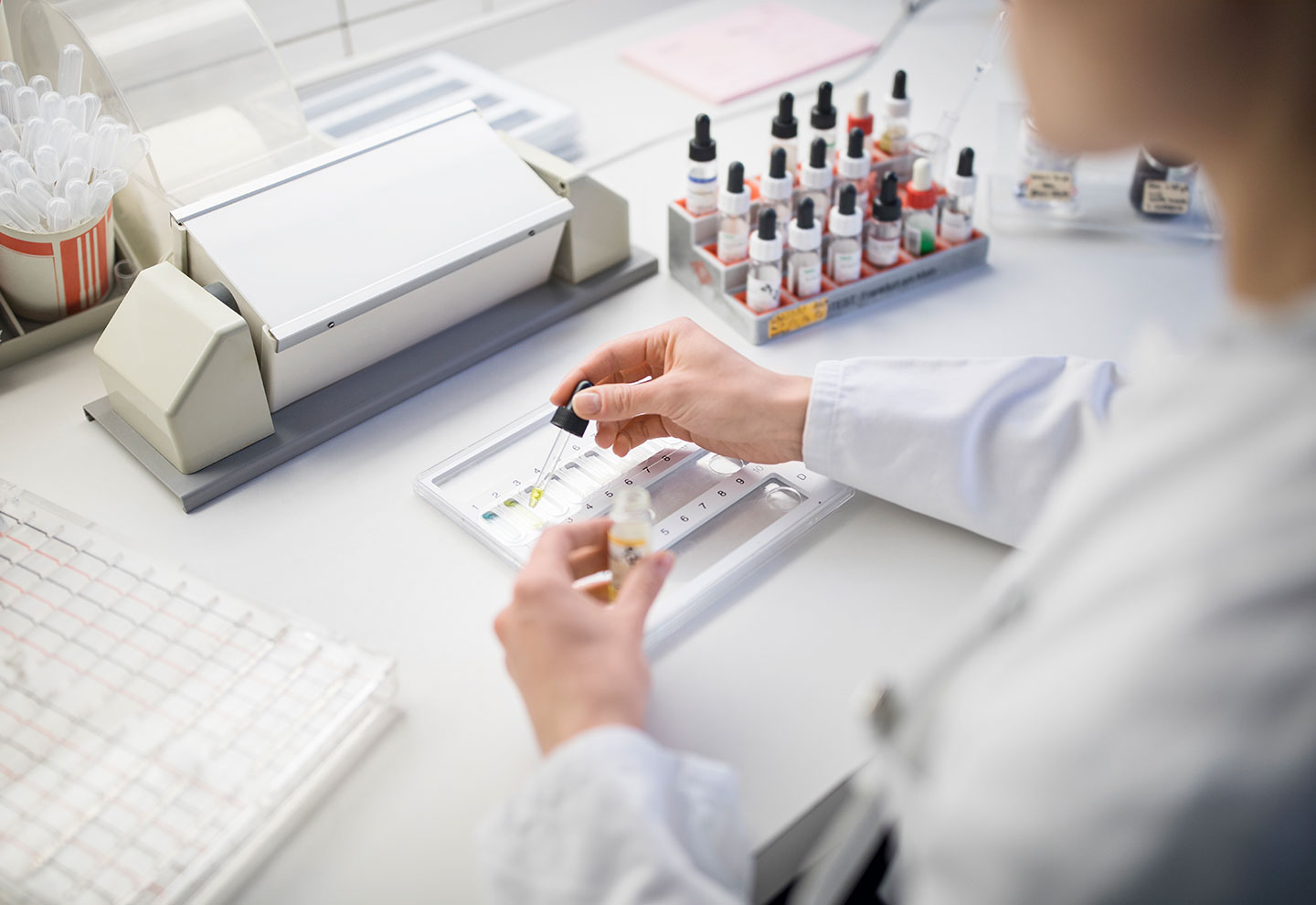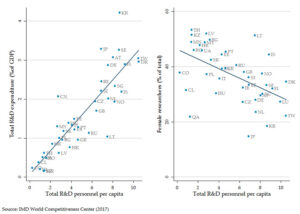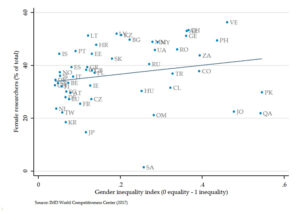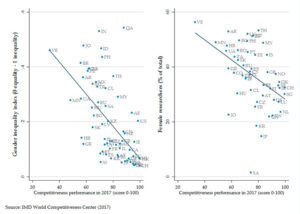
Gender inequality and R&D
Two years ago, the United Nations set a thought-provoking and aspiring agenda for sustainable development to be accomplished by 2030. Its target are seventeen goals related to broad social and economic issues ranging from poverty and hunger, to energy and climate change, and to gender equality and social justice. Purposely ambitious, the 2030 Agenda for Sustainable Development challenges all the countries to achieve a better and more inclusive environment for all by setting high standards. To emphasize the importance of science and gender equality for all, build awareness, facilitate discussions, and empower/inspire women and girls, the UN declared February 11 as the International Day of Women and Girls in Science.
IMD World Competitiveness Center recognizes the importance of the day and this issue of the Criterion of the Month will explore the relationship between the competitiveness ranking of economies and the number of women researchers.
I have been fortunate to know many creative and inspiring women scientists as family members, colleagues in universities and research centers, and students. Many of them are true role models for women and men alike. Thus, I had some preconceived notions about what I would be writing in this note. Alas, all changed when I started working with the IMD Competitiveness online dataset. Let me explain.
The number of researchers in a country depends in part on the total expenditures on R&D. The IMD World Competitiveness Dataset clearly exhibits this relationship. The left panel of Graph 1 indicates that the higher the total expenditures on R&D as a percent of a country’s GDP, the higher the total R&D personnel per capita, i.e., the full-time equivalent work per 1000 people. This positive relationship exhibits a correlation coefficient equal to 0.87.
However, when we plot the female researchers as a percent of the total number of researchers against the total R&D personnel, the relationship is negative with a correlation equal to 0.52. The right panel of Graph 1 presents this relationship. Different interpretations can explain this result; gender inequality is one of them.
Graph 1

Graph 2 presents the relationship between the percent of female researchers and the gender inequality index. Note that the higher the gender inequality index, the less gender parity the economy exhibits. The graph proposes that there is a slight positive relationship. That is, the more gender-unequal an economy is, the higher the percent of female researchers employed. Given that the correlation is low and equal to 0.21, it suggests that, at best, gender inequality is weakly related to the number of female researchers employed.
Graph 2

At this point, the obvious question is: how do economies characterized by high levels of gender inequality perform with respect to competitiveness? Graph 3 addresses the issues related to competitiveness. In the left panel of the graph, we present the relationship between competitiveness ranking and gender inequality. The negative relationship (with a correlation coefficient equal to -0.59) suggests that the high ranked economies with respect to competitiveness relate with higher levels of gender equality. In other words, economies that provide the necessary framework for sustainable value creation are exhibiting lower levels of gender inequality.
So, what is the record of these high competitiveness economies on employing female researchers? The right panel of Graph 3 shows a rather uneasy relationship. That is, the higher an economy with respect to competitiveness, the lower the percent of female researchers employed.
Graph 3

We are not the first to see this phenomenon. Various researchers have argued that the reason for this outcome may be that in the economies with a substantial need for researchers, the availability of female researchers is simply too low. A different type of gender inequality than the one measured above is at work here. Young women, has been suggested, may be discouraged at a young age to follow the path of science and research. Or, their expectations for potential employment are very low and thus prohibitive for making such a commitment.
From an economics point of view, research-oriented economies tend to exhibit high demand for researchers, and therefore, offer high salaries, implementing for such appealing positions the gender pattern we observe.
In either case, letting women know about the intriguing undertakings of and opportunities for a scientific researcher as well as empowering women to make such a choice is at the heart of celebrating the International Day of Women and Girls in Science. Societies do not know from how many Marie Curies or Jane Goodalls we would have benefitted had we used a different narrative.
Research Information & Knowledge Hub for additional information on IMD publications
The B case outlines how, by early 2025, Isabella Phoenix's initial vision for HP's Amplify Impact sustainability program had grown into a global initiative involving 4,800 partners in 48 countries. The program surpassed its goals, enrolling 59 of ...
The A case in this two-part series outlines the challenges Isabella Phoenix faced in designing a global sustainability program for HP's vast network of channel partners in just 12 weeks with only one team member and limited resources. The initiati...
Les études de cas de HBR sont basées sur des problèmes vécus par des dirigeants d’entreprise et proposent des solutions d’experts. Celle-ci est tirée de l’étude de cas de l’Insead « Stress and the City (A&B) : Antonio Horta-Osorio, CEO of Lloyds B...
Absa faced a critical rise in cyberattacks, and with the cybersecurity talent gap widening, the company urgently needed a long-term solution. To address this, former CISO Sandro Bucchianeri launched the Cybersecurity Academy in 2019, an initiative...
When the leaders of the Brics group of developing countries gather on Sunday for their 17th annual summit, the backdrop is one of the most geopolitically volatile the bloc has faced in years, with trade tension, regional conflicts and energy insta...
When Chinese Premier Li Qiang addressed the World Economic Forum’s “Summer Davos” in Tianjin, China, his message was clear: China must become a “mega-sized” consumption powerhouse. Not just the world’s factory, but its market too. His words underl...
in I by IMD
Research Information & Knowledge Hub for additional information on IMD publications
Research Information & Knowledge Hub for additional information on IMD publications
Case reference: IMD-2681 ©2025
Research Information & Knowledge Hub for additional information on IMD publications
Research Information & Knowledge Hub for additional information on IMD publications
Research Information & Knowledge Hub for additional information on IMD publications
Case reference: IMD-7-2642 ©2025
Research Information & Knowledge Hub for additional information on IMD publications
in I by IMD Brain Circuits 8 July 2025
Research Information & Knowledge Hub for additional information on IMD publications
Research Information & Knowledge Hub for additional information on IMD publications
Research Information & Knowledge Hub for additional information on IMD publications
Research Information & Knowledge Hub for additional information on IMD publications





